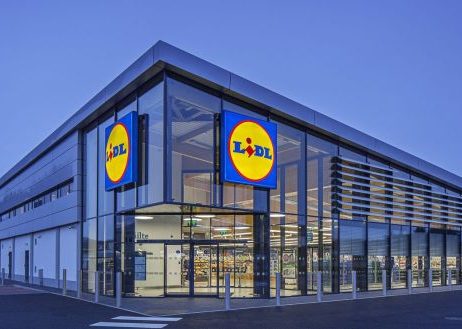Lidl, the German no-frills grocery retailer with more than 10,000 grocery stores throughout Europe, currently has a low profile in the U.S. Yet with the brand planning an aggressive expansion into the U.S., Lidl may not only climb its way out of anonymity but shake up the grocery industry — and possibly the convenience sector — in the next decade.
“Lidl’s arrival here in the U.S. will be the single biggest event in the U.S. retail industry over the next couple of years,” said Mike Paglia, Director of Retail Insights at Kantar Retail. Such a confident prediction stems from the Kantar team’s forecasts for the next seven years, which project rapid growth for the brand. Lidl is expected to:
-
Generate $8.8 billion in U.S. sales by 2023, eclipsing Wegman’s 2016 value of $8.1 billion;
-
Generate $7 million when the rollout starts in 2018, with the first major jump in sales occurring when more stores openings in 2019;
-
Generate an average of $10 million in sales in some early stores, averaging $15.2 million in sales per store by 2023
-
Open 100 stores per year, reaching 630 stores by 2023; and
-
Target the U.S. Eastern seaboard, building 400 stores there by 2020. This would put the brand in direct competition with grocery retailers including Walmart, Dollar Tree, Dollar General and the Ahold-Delhaize brands Food Lion and Stop & Shop.
The high sales projections and aggressive store opening schedules should certainly catch the eye of the would-be grocery competitors, especially given Lidl’s low-price merchandise and minimalistic service experience. Unlike most major grocery brands, Lidl offers:
-
A limited fresh foods assortment focused primarily on private label;
-
Locally-produced and seasonal goods; and
-
Minimal focus on store investment, with limited labor and minimal assistance required.
These characteristics, in combination with a quick-to-decision supply chain, enable the stores to procure and sell goods at cheaper prices than a typical supermarket.
With these characteristics in mind, grocers over the next decade are likely going to have to excel elsewhere, whether through more personalized services, unique assortments and promotions and/or better integration of omnichannel shopping solutions.
“The more differentiated a retailer is, and the more unique its value proposition is, the more that it can stand out from the crowd and the better insulated it will be from the ‘Lidl threat,’” Paglia said in an interview with Retail TouchPoints. “The flipside of that is that retailers that have already been struggling with lukewarm sales, and a perception among shoppers as being vanilla and conventional and stale, are the ones that are feeling the pressure the most. They’re going to have to reinvent themselves to get on their shoppers’ radars.”
Lidl Wields Sharper Tools Than Aldi
Lidl is often compared with fellow German discount supermarket chain Aldi, which has already established a major presence in the U.S. with 1,550+ stores. Like Lidl, the brand is continuing aggressive expansion efforts, seeking to push its U.S. store count above 2,000 by 2018. But while the two brands are often paired together due to their value-oriented business models, Paglia noted that their similarities are largely superficial, and that Lidl has the chance to achieve greater sales within the U.S.
“The core difference between the two is that Lidl is more flexible and innovative and I think that’s going to help them adapt to the market differences here in the U.S.,” Paglia said. “Lidl is less risk averse, it’s willing to try new things, and that helps them discover the nuances of the markets that they’re in more quickly. Aldi has more of a cookie-cutter type approach to its business, and for them the growth means finding markets where their existing offer will work well. While there are still a lot of places in the U.S. where an Aldi can thrive, there is an upper limit to that somewhere.”
Will Convenience Be Part Of Lidl’s U.S. Expansion Plans?
In Europe, Lidl is now attacking the convenience store model, opening select ‘Lidl Express’ store formats that serve as a pickup point for online orders where consumers can also buy fresh products. It is still yet to be determined whether the brand has any plans to test these store concepts on U.S. soil.
Top U.S. retailers are embracing convenience headed into 2017, so there may be a battle brewing that would ramp up quickly if Lidl were to get involved. Walmart has been a convenience player since the late 1990s with its Neighborhood Market locations, but is just now integrating online ordering into a new test format called Walmart Pickup and Fuel. These stores will offer same-day pickup for groceries ordered online, and will offer grab-and-go items including hot sandwiches, healthy snacks, drinks and a coffee bar, as well as basics like milk, eggs, and bread.
Amazon made a splash when reports circulated that the company planned to open 2,000 small format grocery stores in the U.S. — plans that have since been denied. But with the inaugural Amazon Go checkout-free grocery store scheduled to open to the public in 2017, and 20 brick-and-mortar stores slated to be opened by the end of 2018, Lidl may need to make a decision as to whether it wants to take on not only the titans of grocery, but the overall retail leader as well.













3 Ways Livestreaming is Shaking Up the Retail Marketing Playbook